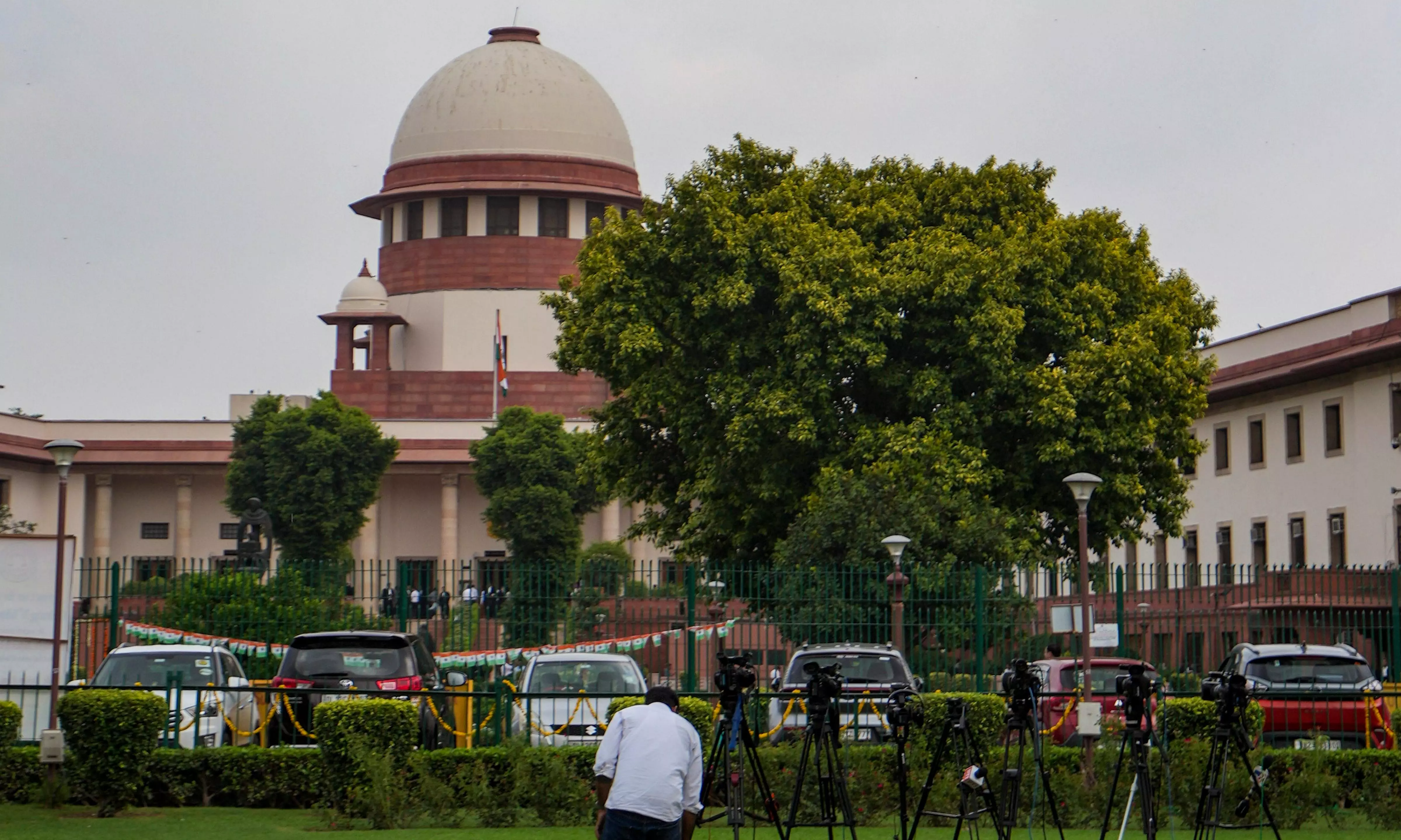
Demolition near Somnath Temple: Compound wall should be of 5-6 ft, SC tells Gujarat
Observing that the compound wall should be of a reasonable height, the bench asked the state why it wants to have a 12-feet wall instead

New Delhi, Apr 28 (PTI) The Supreme Court on Monday told the Gujarat government that a compound wall, being constructed to prevent encroachment at a demolition site near Gir's Somnath Temple, should be five to six feet height.
The observations came from a bench of Justices B R Gavai and Augustine George Masih which was informed by the state that they were constructing a compound wall to prevent encroachment.
Contesting the petitioner's claims on the height of the compound wall, solicitor general Tushar Mehta, representing Gujarat, said the authorities could always protect a government land by constructing a compound wall.
"Don't have a 12 feet wall. If you are protecting it, five feet, six feet is enough," Justice Gavai observed.
Mehta said the claims about a 12-feet compound wall was only an "oral assertion" of the petitioner's counsel.
"We are not putting up a fort so that nobody can enter inside. It is to prevent it from unauthorised encroachment," he added.
The bench observed the compound wall should be of a reasonable height and asked, "Why do you want to have a 12-feet compound wall?" "Make it five or six feet," the bench said.
Justice Gavai told Mehta to instruct the collector concerned about the same.
"I will instruct," Mehta assured.
Senior advocate Sanjay Hegde, appearing for the petitioner, said the authorities were making an attempt to change the status quo by constructing a compound wall.
Mehta refuted Hegde's claims and referred to his previous statement made in the top court in the matter.
On January 31, Mehta made made a "categorical statement" that no activities, including the Hindu religious rituals were being permitted on the land under encroachment.
On Monday, he said the position was as is.
"We are only constructing a compound wall for preventing encroachments," he said.
Hegde said the authorities were making a 12-feet compound wall and the petitioner didn't know what was happening inside.
"Why would you not know? There are drones available everywhere now," the bench observed.
Hegde then said, "It is like you have made a Great Wall of China and saying we are protecting." Mehta responded, "It is not a Great Wall of China. Let us not sensationalise." The petitioner said that status quo should be maintained at the site.
The bench then posted the hearing on May 20.
The top court told Hegde if the authorities carried out any other construction, he could approach the court.
On January 31, the apex court rejected a plea seeking to hold "Urs" festival between February 1 and February 3 at a dargah (Muslim shrine) razed in Gujarat's Gir Somnath district during the demolition drive.
The bench noted Mehta's submission that entire unauthorised constructions, including the temples on the land belonging to the government, were demolished.
Among others, a contempt petition was filed against Gujarat authorities for allegedly demolishing residential and religious structures in the district on September 28 without top court's prior nod.
The Gujarat government justified its demolition action, saying it was an ongoing drive for removing encroachments on public land.
The bench was hearing a plea against a Gujarat High Court order by which a status quo on demolitions of Muslim religious structures was declined.
On October 4 last year, the top court cautioned the authorities, saying it would ask them to restore the structures if they were found acting in contempt of its order against such an action but refused to order a status quo on the demolition.
The top court on September 17 last year, in a different matter over demolition by some states, stopped the demolition of properties, including those of persons accused of crime, without its permission and said even a single instance of illegal demolition was against the "ethos" of the Constitution.
The top court, however, clarified its order did not apply to unauthorised structures on public roads, footpaths, railway lines or public places like water bodies, among others. PTI
(Except for the headline, this story has not been edited by The Federal staff and is auto-published from a syndicated feed.)

